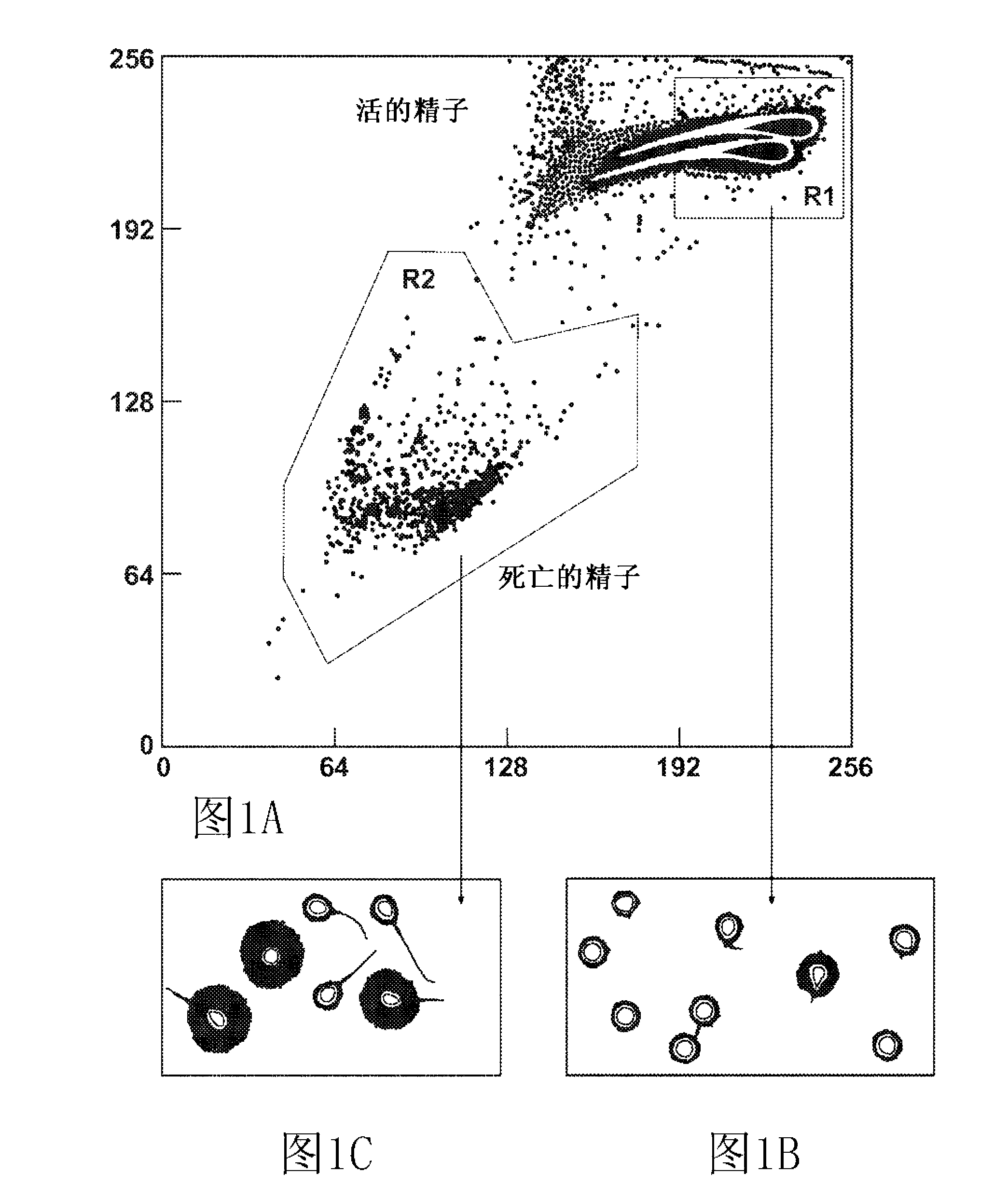Methods and systems for reducing dna fragmentation in a processed sperm sample
A sample, sperm technology, applied in the field of reducing DNA fragmentation in processed sperm samples and systems to address issues such as damage
- Summary
- Abstract
- Description
- Claims
- Application Information
AI Technical Summary
Problems solved by technology
Method used
Image
Examples
Embodiment 1
[0067] Example 1 - The first experiment was performed to analyze the difference in the amount of DNA fragmentation before and after sex sorting. Sperm samples were taken from 5 Jersey bulls and each sample was divided into two aliquots. The first set of aliquots were sex sorted and then frozen. A second set of aliquots was directly frozen. Table 1 shows the level of DNA fragmentation obtained for each bull before and after sorting.
[0068] Table 1 (% DNA fragmentation, sex sorting)
[0069] refer to
[0070]Baseline levels of DNA damage in pre-sort samples from the 5 bulls ranged from 5.3% to 11%, with a mean and standard deviation of 7.9±2.1. The level of sperm DNA fragmentation obtained in sex-sorted sperm samples was much lower with a mean and standard deviation of 3.1 ± 1.9. The average reduction in sperm DNA fragmentation was 63%, but the reduction in Bull 2 was as high as 85%.
Embodiment 2
[0071] Example 2 - The second experiment looks specifically at DNA fragmentation in each sorted subpopulation after sex sorting. Five more jersey bulls were used in this experiment; each was collected and sorted to obtain three sperm subpopulations. The first sperm subpopulation consisted mainly of those sperm considered dead, indicated by red food dye or propidium iodide via conventional sorting techniques. The second and third subpopulations consisted mainly of live sorted spermatids. A portion of each sample was tested prior to sorting to establish a baseline for DNA fragmentation. As shown in Table 2, the baseline of DNA fragmentation had a mean and standard deviation of 7.9 ± 2.5. Averaged across bulls, DNA fragmentation assays in the sorted X-chromosome-bearing subpopulation had a mean and standard deviation of 1.8±1.5 and a mean and standard deviation of 1.2±0.6 in the Y-chromosome-bearing subpopulation. The third sperm subpopulation contained all dead sperm, which...
Embodiment 3
[0074] Example 3 - A third experiment was performed to analyze the distribution of sperm DNA fragmentation in 100 sex-sorted sperm storage tubes after thawing to compare the variation between samples collected at different times from 10 Holstein bulls. Each sperm storage tube was collected and sex-sorted for X-chromosome-carrying sperm. As can be seen from Table 3, sperm storage tubes collected from the same bull on different days often have very similar DNA breaks. Although there were some occasional outliers, most samples obtained from individual bulls showed similar DNA fragmentation regardless of whether they were collected on different days.
[0075] Table 3 (% DNA fragmentation, X-sorted samples collected on different days)
[0076]
PUM
 Login to View More
Login to View More Abstract
Description
Claims
Application Information
 Login to View More
Login to View More - R&D
- Intellectual Property
- Life Sciences
- Materials
- Tech Scout
- Unparalleled Data Quality
- Higher Quality Content
- 60% Fewer Hallucinations
Browse by: Latest US Patents, China's latest patents, Technical Efficacy Thesaurus, Application Domain, Technology Topic, Popular Technical Reports.
© 2025 PatSnap. All rights reserved.Legal|Privacy policy|Modern Slavery Act Transparency Statement|Sitemap|About US| Contact US: help@patsnap.com



